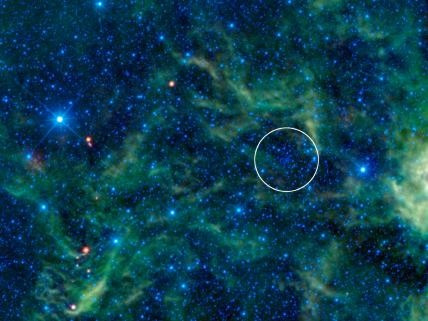Telescope Discovers 96 New Star Clusters in Milky Way Galaxy

The VISTA Variables Telescope was able to see through dusty regions of the galaxy and discover 96 new star clusters.
Astronomers used data from the VISTA infrared survey telescope at European Space Observatory's (ESO) Paranal Observatory. The star clusters, which astronomers defined as "tiny and faint objects" were previously hidden by the dust in the Milky Way Galaxy.
According to the ESO, the VISTA telescope was able to detect the small objects through sensitive infrared detectors, which can peer through dust. Clusters are considered the the building block of galaxies and vital for the formation and evolution of galaxies. However, they can become difficult to discover because newer star clusters get their light absorbed from older ones.
"In order to trace the youngest star cluster formation we concentrated our search towards known star-forming areas. In regions that looked empty in previous visible-light surveys, the sensitive VISTA infrared detectors uncovered many new objects," Dante Minniti, lead scientist of the VVV survey, said in a statement.
The astronomers used software to remove the foreground stars, which appeared in front of each cluster. Once it did this, it could count the most genuine cluster members. Afterwards, it was able to measure the size and scope of each cluster.
"We found that most of the clusters are very small and only have about 10-20 stars. Compared to typical open clusters, these are very faint and compact objects - the dust in front of these clusters makes them appear 10 000 to 100 million times fainter in visible light. It's no wonder they were hidden," Radostin Kurtev, an astronomer on the VVV team said.
Astronomers estimate 30,000 lost clusters in the Milky Way Galaxy. As many as 2,500 open clusters. ESO says this discovery could represent the tip of the iceberg.
In addition, ESO says the discovery represents a major achievement for the VISTA telescope. The VISTA is the world's largest survey telescope and is part of the Via Lactea programme (VVV)
"This discovery highlights the potential of VISTA and the VVV survey for finding star clusters, especially those hiding in dusty star-forming regions in the Milky Way's disc. VVV goes much deeper than other surveys," Jura Borissova, lead author of the study, said in a statement.
Results from the discovery will appear in the journal Astronomy & Astrophysics.
Follow Gabriel Perna on Twitter at @GabrielSPerna
© Copyright IBTimes 2025. All rights reserved.





















